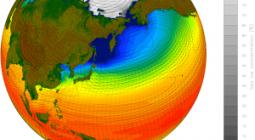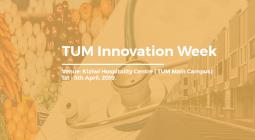Climate Change: Enough of the ‘Why?’ Time for the ‘Now’

Solutions Won’t Be Easy to Find, But Collaboration and Innovation Offer New Opportunities—and B Corps Can Help
It’s been a busy month for the environment. Actually, it’s been a busy 50 years, but when the conversation around the health of the planet recedes into the background, we get shockingly destructive reminders. In recent months alone, Hurricanes Michael and Florence and the earthquake in Indonesia have all made the same point: The time to act is (and has been) now.
These reminders have disproportionately affected those who are least able to withstand it. We still hear about broad devastation — and neglect — of many parts of Puerto Rico after Hurricane Maria. And the earthquake in Indonesia is just the latest in a long line of extreme weather events that continue the tradition of impacting the poor and vulnerable.
So how do we move the conversation from “Why” and “Who caused it” to “What do we do about it”? Thankfully, the hard work is underway. A range of social entrepreneurs are already tackling these problems. We have a unique opportunity to focus on raising awareness around their work, at a time when the discourse is focused on increasingly unimportant questions like “Whose fault is this?”
The Facts
While there is still disagreement on the causes of severe climate deterioration — as frustrating as that conversation continues to be to some — there is well-documented and verified data around the changes our planet has endured.
To start, the planet’s average surface temperate has risen about 1.62 degrees Fahrenheit (0.9 degrees Celsius) since the 19th century. Thanks to the progressive sophistication of industry, how we make the things we frequently consume, and the extended quality and duration of our own lives, that change has primarily been driven by carbon dioxide increases (alongside other human-made emissions). Our oceans have borne the brunt of this impact, with the top 2,300 feet (700 meters) of ocean showing a warming of 0.3 degrees Fahrenheit since the late ’60s.
Whether you believe that humans caused it, didn’t cause it or are the butt of some cosmic practical joke, the American Meteorological Society boils it down to the following overarching narrative:
- Our climate is changing.
- Humans are playing a role in causing that change.
- Human-caused climate change poses risks that we are not prepared to address.
- We have numerous options to manage those risks.
Fortunately, we’ve already started thinking about how to combat these adverse impacts. Solutions to managing those risks fall into four broad categories:
- Mitigation by reducing greenhouse gas emissions.
- Adaptation by increasing our capacity to cope with climate impacts.
- Geoengineering/climate engineering by counteracting those impacts through manipulation of our earth system.
- Expanding our knowledge base and worldwide education through better understanding climate change’s implications and our options.
These strategies are not mutually exclusive. In order to be successful, we will likely need a range of solutions that champion mitigation, adaptation and innovation.
Urgency in Our Own Backyard
Despite common misconception, the infrastructure financing gap doesn’t only exist in emerging markets, though infrastructure shortages disproportionately affect those in developing economies. The Infrastructure Report Card, published by the American Society of Civil Engineers every four years,awarded U.S. infrastructure a D+ in 2017.
Officials in South Carolina, which was directly impacted by the devastation of Hurricane Florence in September, will have to think about how to rebuild a range of physical infrastructure in the coming months and years. And despite the infrastructure that has been threatened with recent natural disasters, existing needs already were growing. Across the state, driving on roads in need of repair costs drivers $502 a year, and over 10 percent of South Carolina’s bridges were recently rated as structurally deficient. Desperately needed drinking water-related infrastructure in the state will cost an estimated $1.8 billion, and 178 existing dams are currently considered “high hazard potential.” Beyond traditional infrastructure, the state’s institutions need help too. South Carolina’s schools have an estimated capital expenditure gap of $90 million.
And that was before Florence.
Our needs have steadily been increasing without a rise in the frequency and scale of natural disaster. How we rebuild — and with what capital — should be an essential part of the current conversation.
Time to Acknowledge the Trailblazers
Impact investors and sustainability advocates have been searching for multilevel solutions for some time, thanks to a deeply felt sense of urgency. For some reticent investors, the discussion around investing in climate only becomes comfortable as a market-opportunity (rather than an impact strategy). It’s no wonder why: Those investment gains have been — and continue to be — sizable. And in a time of increasing market volatility, investing in climate across some asset classes can offer an alternative to lower yields and inflation protection.
But moving capital — and getting investors excited about investing in climate — is only one part of the challenge. Many investors respond to this clarion call by asking “Well, who do I invest in?” It’s a fair question, but it hints at innovation stagnancy, which is simply out of touch with the numerous companies that are developing scalable, high-yield climate solutions.
For example, we don’t have to look much further than the Certified B Corporation community to find a range of catalytic companies and innovative thinkers on the case. The next time you meet someone who laments about how hard it is to invest in climate, share a few of the following examples.
Conservation
BioCarbon Partners, a newly certified B Corp (and a Best For the World winner in 2018) focuses specifically on the deforestation threats in Zambia. It sells carbon offsets generated from its local projects and channels those returns into preserving forests. Working directly with local communities, BioCarbon also offers opportunities for local income generation while creating a market for entrepreneurship.
Waste Management
Valley City Electronic Recycling is a Michigan-based recycling provider with clients across the Midwest. With a commitment to a “zero landfill policy,” the e-waste provider focuses on disassembly rather than shredding. This shift allows the recycler to repurpose reusable base materials and creates local jobs in the process.
Renewable Energy
Ilumexico was founded in 2009 to address a specific problem: a disproportionate lack of access to electricity in rural Mexican communities. By providing access to clean and safe energy, Ilumexico has designed a new framework for community intervention and access. Its approach includes educating households on energy use and consumption, providing energy access to schools and hospitals (often neglected by small scale suppliers), and promoting clean and safe energy access. Illumexico combines two critical ingredients of sustainable energy use and consumption: education and access.
Carbon Capture and Credits
GreenCollar is the largest provider in Australia of carbon abatement — the practice of reducing the amount of carbon dioxide produced through “dirty” energy. To date, it has implemented over 100 carbon farming projects throughout the country, supplying over 62 million tonnes of abatement. The investment in the environment across renewable energy, carbon, water quality and biodiversity seeks to protect some of Australia’s most vulnerable natural landscapes, while helping to create additional income streams for farmers and graziers in an environmentally sustainable way.
For more information on the vast number of B Corps working to protect and repair our planet and develop market-based solutions, check out the B Corps directory here.
30 October 2019





